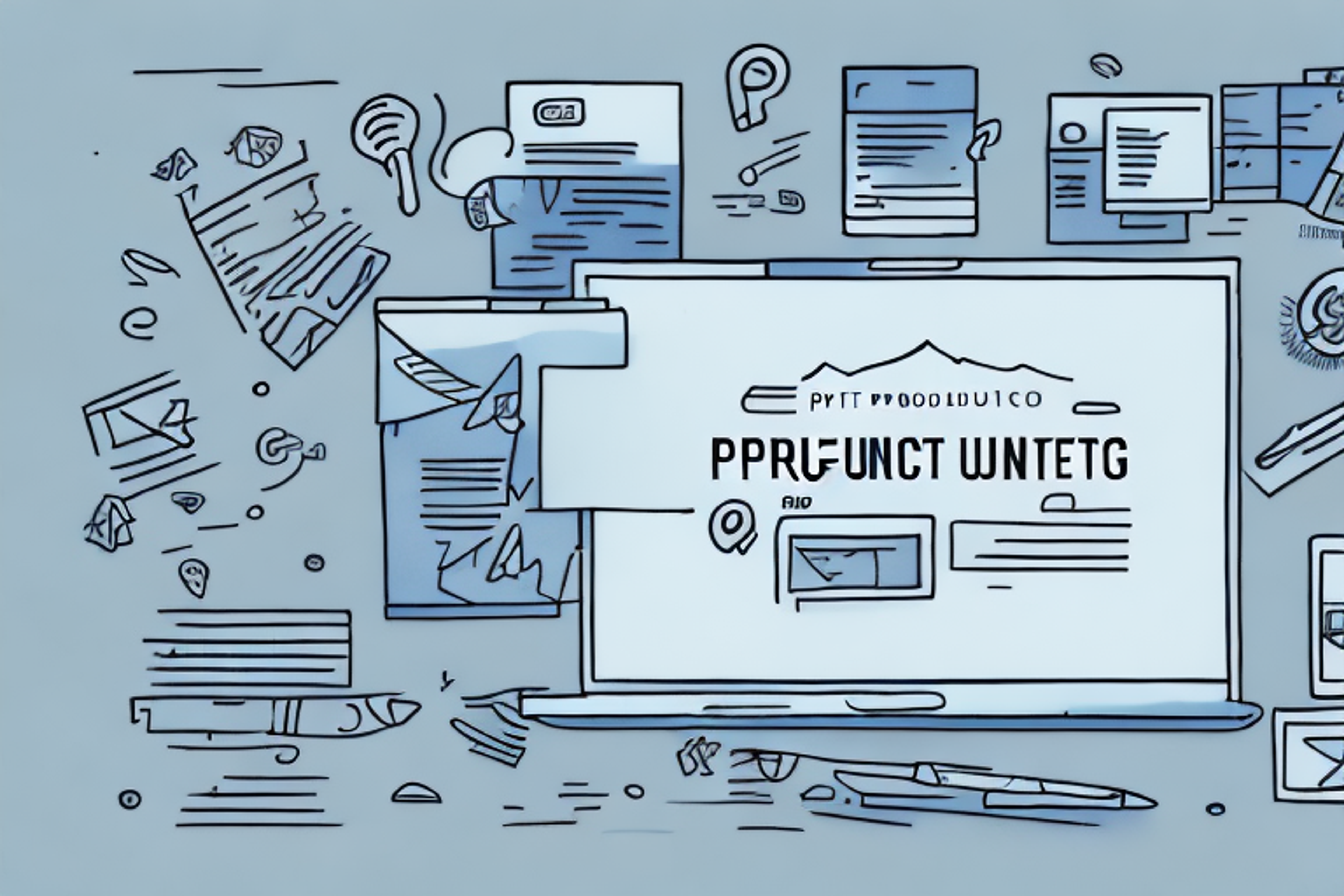Product Marketing Management: Techniques for Success
Discover the essential techniques for successful product marketing management with our comprehensive guide.
Posted May 15, 2023

Table of Contents
As the business landscape becomes increasingly competitive, the role of product marketing management has become more significant for companies looking to succeed in their respective markets. Product marketing management is the art of strategically promoting, positioning, and pricing a company's product offerings to appeal to a specific target market. In this article, we will delve into the essential techniques of product marketing management that can help businesses achieve success.
Why Product Marketing is Essential for Business Success
The importance of product marketing management cannot be overstated. Properly executed product marketing enables businesses to identify and satisfy the needs of their target audience. A well-crafted product marketing strategy can make the difference between a successful product launch and a failed one. It is the key to developing products that meet the needs of the consumers and ultimately drive increased revenue and growth for the business.
Furthermore, product marketing also plays a crucial role in building brand awareness and loyalty. By effectively communicating the unique value proposition of a product, product marketers can differentiate their brand from competitors and establish a strong brand identity in the minds of consumers. This, in turn, can lead to increased customer loyalty and advocacy, as satisfied customers are more likely to recommend the brand to others.
Understanding the Basics of Product Marketing Management
The first step in product marketing management is to conduct market research and identify the target audience. This includes defining customer demographics, analyzing competitors, and understanding the buying behaviors of the target market. Once this initial research is conducted, businesses can move on to creating a value proposition that aligns with their customers' needs. The value proposition should articulate why the product is unique and valuable to the customer.
After creating a value proposition, the next step is to develop a marketing strategy that will effectively reach the target audience. This includes determining the appropriate marketing channels, such as social media, email marketing, or advertising, and creating messaging that resonates with the target market. It's important to continually evaluate and adjust the marketing strategy based on the success of each channel and messaging.
Product marketing management also involves working closely with other departments, such as product development and sales, to ensure that the product is meeting customer needs and that the sales team is equipped with the necessary information and tools to effectively sell the product. Ongoing communication and collaboration between departments is crucial for the success of the product and the overall business.
Identifying Your Target Market: A Crucial Step in Product Marketing
Identifying and understanding the target market is the cornerstone of product marketing management. Without a clear understanding of who the product is intended for, it is impossible to develop an effective marketing strategy. Businesses must understand their target market's demographics, needs, and interests to create a product that resonates with them.
One way to identify your target market is by conducting market research. This can include surveys, focus groups, and analyzing data on consumer behavior. By gathering this information, businesses can gain insights into their target market's preferences, behaviors, and purchasing habits.
Another important aspect of identifying your target market is understanding their pain points and challenges. By understanding the problems that your target market faces, businesses can develop products that provide solutions and meet their needs. This can help to differentiate your product from competitors and create a loyal customer base.
Conducting Effective Market Research Techniques for Product Marketing
Market research is a vital aspect of product marketing management. It enables businesses to identify and understand the gaps in the market and develop products that meet the specific needs of their target audience. Effective market research includes a mix of quantitative and qualitative data collection methods such as surveys, focus groups, and in-depth interviews.
One of the key benefits of conducting market research is that it helps businesses to stay ahead of their competitors. By understanding the needs and preferences of their target audience, businesses can develop products that are more appealing and relevant than those of their competitors. This can help to increase market share and profitability.
Another important aspect of effective market research is data analysis. Once data has been collected, it needs to be analyzed to identify patterns and trends. This can help businesses to make informed decisions about product development, pricing, and marketing strategies. Data analysis can also help businesses to identify areas where they need to improve their products or services to better meet the needs of their customers.
Creating a Winning Product Marketing Strategy: Tips and Tricks
Create a product marketing strategy that aligns with your business goals and objectives. A successful product marketing strategy should identify and communicate the unique selling points of your product to your target audience. It should also provide a clear, concise message that differentiates the product from your competitors. Additionally, it should outline the tactics that will be used to reach your target audience, such as digital marketing or traditional advertising.
Another important aspect of a winning product marketing strategy is to continuously analyze and adapt your approach. This means regularly reviewing your marketing metrics and adjusting your tactics accordingly. It's also important to stay up-to-date with industry trends and changes in consumer behavior, as this can impact the effectiveness of your marketing strategy. By staying agile and adaptable, you can ensure that your product marketing strategy remains relevant and effective in a constantly evolving market.
Crafting a Compelling Value Proposition for Your Product Offering
A value proposition is a statement that clearly articulates the benefits of your product to your target audience. It should be succinct, clear, and compelling, highlighting the unique value of your product to the consumer. A strong value proposition can significantly improve sales and help businesses to stand out from the competition.
Developing a Strong Brand Identity for Your Products: Best Practices
A strong brand identity can be a powerful tool in product marketing management. It helps to establish trust with your target audience and differentiate your product from the competition. Developing a strong brand identity requires careful consideration of brand elements such as logo, messaging, tone of voice, and visual identity. Consistency across all brand elements is key in establishing a strong brand identity.
Building an Effective Sales Funnel for Your Product Line
A sales funnel is a visual representation of the process that a customer goes through in purchasing a product. An effective sales funnel is critical in converting leads into sales. Businesses must understand the stages of the sales funnel and tailor their marketing efforts to each stage. Tactics such as email marketing, social media advertising, and webinars can be used at different stages of the sales funnel to drive conversions.
Leveraging Digital Marketing Channels to Promote Your Products
Digital marketing has become an essential tool in product marketing management. The proliferation of digital channels provides businesses with the opportunity to reach their target audience in a cost-effective and targeted manner. Digital marketing tactics such as SEO, social media advertising, and email marketing can be used to promote products and attract customers.
Measuring the Success of Your Product Marketing Campaigns: Metrics to Focus On
Measuring the success of product marketing campaigns is crucial in driving growth and improving future marketing efforts. Businesses can use a range of metrics to measure the success of their campaigns, such as conversion rates, click-through rates, and return on investment. Understanding these metrics can help businesses to improve future campaigns and optimize marketing efforts.
The Role of Customer Feedback in Improving Your Product Offerings
Customer feedback is a critical component of product marketing management. It allows businesses to understand their customers' needs and tailor their products and marketing efforts accordingly. Businesses can collect customer feedback through a variety of methods such as surveys, focus groups, and online reviews. Analyzing customer feedback can provide valuable insights into areas for improvement and help businesses to continuously innovate their product offerings.
Best Practices for Managing Product Launches Successfully
Managing product launches can be a complex and challenging task. However, there are best practices that businesses can follow to ensure success. These include setting clear objectives for the launch, identifying the target audience, creating a compelling value proposition, and developing a comprehensive marketing strategy. Additionally, businesses should monitor performance metrics and make adjustments as needed to drive success.
The Importance of Continuous Innovation in Product Marketing Management
Continuous innovation is a critical component of product marketing management for businesses looking to stay ahead of the competition. It involves identifying and implementing new ideas and solutions that improve the product and meet the evolving needs of your target market. Continuous innovation can be achieved through tactics such as gathering customer feedback, staying up-to-date with industry trends, and investing in research and development.
Common Mistakes to Avoid in Product Marketing Management
Finally, it is essential to be aware of some common mistakes that businesses make in product marketing management. These include failing to conduct adequate market research, targeting the wrong audience, misunderstanding the customer's needs, and lacking a clear value proposition. Additionally, businesses must avoid relying solely on one marketing channel and failing to measure the success of their campaigns.
By following the above techniques of product marketing management, businesses can effectively develop and market their products to meet the needs of their target audience, driving growth and success in their respective markets.



















